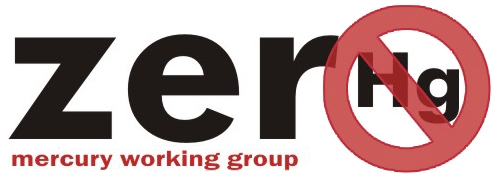Oil refining emits and releases mercury, as oil deposits are known to contain mercury, generally at low concentrations. Mercury is removed from most petroleum products and natural gas prior to combustion, and therefore combustion-related emissions are low. Most of the mercury in crude oil is associated with solid waste that is disposed of in landfills. However, emissions and releases during refining of crude oil do occur and these have been quantified for the first time in the 2010 inventory. The inventory does not quantify other emissions and releases during oil and gas extraction and transport or from flaring.
Unintentional mercury emissions from these sectors can be reduced by the application of pollution control measures at power plants and industrial plants. Some of the mercury captured is refined and enters the commercial supply chain; however, large amounts of mercury captured in materials such as fly ash and oil refinery waste need to be disposed of. Some of the resulting wastes are themselves used as raw materials, for example in construction materials, but large amounts are disposed of in landfills, which can thus become a potential source of mercury emissions and releases. (GMA, 2013)
Mercury emissions to air , from oil and gas burning and refining account for around 2% of global emissions (GMA 2013).
Oil and gas extraction, transport, and processing is still however not yet quantified, globally.
Relevant legislation and NGO policy work
Globally
Mercury emissions from oil and gas are not covered under the Minamata Convention for now.
In the EU
Under the EU Mercury Regulation 2017/852, Article 11 referring to Waste mentions that mercury and mercury compounds, whether in pure form or in mixtures, from the cleaning of natural gas (among others)shall be considered to be waste within the meaning of Directive 2008/98/EC and be disposed of without endangering human health or harming the environment, in accordance with that Directive.
In terms of emissions, the industrial activity of Refining Mineral oil and gas is covered under the Integrated Pollution Prevention and Control (IPPC) Directive (96/61/EC).
In 2010- the Integrated Pollution Prevention and Control (IPPC) Directive (96/61/EC) was replaced by the Industrial Emissions Directive (IED),which has entered into force on 6 January 2011 and was transposed into national legislation by Member States by 7 January 2013.
Although the principle is the same as for IPPC, the role of the Best Available Technique (BAT) Reference Documents (BREFs) has been strengthened, providing more opportunities to the legislator to question why mercury process may still be permitted in the sector.
IED sets out the main principles for the permitting and control of installations based on an integrated approach and the application of best available techniques (BAT) which are the most effective techniques to achieve a high level of environmental protection, taking into account the costs and benefits. For more information on the directive please visit the EC website.
Through the implementation of the IED, the role of the BREFs has been strengthened. After a BREF is completed, it should be subject to BAT conclusions that are adopted through a comitology decision (implementing act). The right of initiative however rests with the Commission. BAT conclusions contain parts of the BREF, their description, information on applicability, including BAT Associated Emission Levels (BATAELs) for different pollutants (meaning emission levels that can be achieved for a pollutant if the industry is implementing BAT) as well as associated consumption levels and monitoring.
It may also include site remediation measures “where appropriate”. Within 4 years after publication of the comitology decision on the relevant BAT conclusions, local authorities should review and update all the permits to the respective industries in order to make sure the industrial activity operates according to the requirements set out in the BAT conclusions.
The provision in the IED requires that Emission Limit Values (ELVs) for pollutants set out in the permit should not exceed the relevant BATAEL. However the permit writer may derogate in specific cases and set higher ELVs under certain conditions. An assessment needs to demonstrate that the application of the BATAEL would lead to disproportionate higher costs compared to the benefits due to the local conditions (technical characteristics of the plants, or geographical location or local environmental conditions).
In any case no significant pollution may be caused and a high level of protection of the environment as a whole is achieved. Environmental Quality Standards also need to be respected. These derogations are subject to public participation and scrutiny by the public concerned, which includes NGOs.
The benchmarks or criteria on which BAT relies are described in the BAT Reference Documents (BREFs). The first Refining mineral oil and gas BREF was adopted in 2003. The BREF was revised in 2014, and BAT conclusions were adopted in October 2014.
BAT conclusions for the natural gas refinery
- BAT 41. In order to reduce sulphur dioxide emissions to air from the natural gas plant, BAT is to apply BAT 54.
- BAT 42. In order to reduce nitrogen oxides (NOX) emissions to air from the natural gas plant, BAT is to apply BAT 34
- BAT 43. In order to prevent emissions of mercury when present in raw natural gas, BAT is to remove the mercury and recover the mercury-containing sludge for waste disposal.

